
Payroll Outsourcing For Small Business | From $19/Month
Buyer’s Guide for Payroll Outsourcing for Small Businesses
From churches to restaurants and other small businesses, managing payroll can be a complex, time-consuming task. Outsourcing this function can save time and resources, letting you focus on your business’s core activities. However, finding the right payroll outsourcing service is critical. This guide from the experts at MyPayrollOutsourcing.com will help you navigate through the process of outsourcing payroll and highlight the main advantages and features to consider.
Advantages of Payroll Outsourcing
- Time Savings: Payroll processing is time-consuming, especially as your small business grows. Outsourcing can free up time, allowing you to focus on strategic tasks.
- Cost Efficiency: Although outsourcing has an associated cost, it can often be more cost-effective than maintaining an in-house payroll department, especially considering the time and resources saved.
- Compliance: Payroll regulations change frequently and can be complex. A good outsourcing service stays updated with these changes, ensuring your business remains compliant and avoids penalties.
- Accuracy: Payroll errors can be costly and damaging. Professional payroll services have expertise and systems in place to minimize errors.
- Data Security: Reputable payroll services use secure systems to protect employee information from theft or fraud.
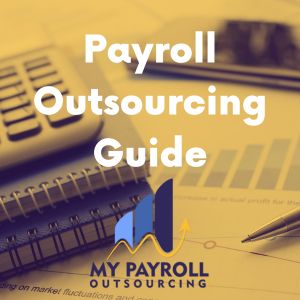
Features to Look for in a Payroll Outsourcing Service
- Comprehensive Services: Look for a service that covers all your payroll needs, including calculations, deductions, direct deposits, year-end tax forms, and more. Some providers also offer additional HR services.
- User-Friendly Interface: A good payroll service should offer an easy-to-use online dashboard where you can view and manage your payroll details.
- Customer Support: Look for a company that provides robust customer support, ideally with multiple communication channels (e.g., phone, email, chat). Timely and effective assistance can be crucial when dealing with payroll issues.
- Security: Ensure that the service provider uses advanced security measures to protect your data, such as encryption and two-factor authentication.
- Customization: Every business has unique payroll needs. The right provider should offer customizable solutions to cater to your specific requirements.
- Integration Capabilities: It’s beneficial if the payroll system can integrate with other systems you or your accountant might use, such as accounting or HR software, to streamline your operations.
- Scalability: As your business grows, your payroll needs will change. Choose a provider that can scale with you.
- Reputation and Reliability: Research each provider’s reputation. Look at customer reviews and ask for referrals from other businesses. The provider should have a proven track record of reliability and accuracy.
Outsourcing your payroll can bring many benefits, but it’s crucial to choose a provider that fits your business’s needs and can deliver a reliable, secure service. By considering the advantages and essential features outlined in this guide, you can make an informed decision and find the best payroll outsourcing service for your small business.
Popular Payroll Brands
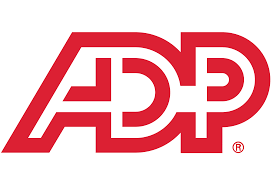
ADP
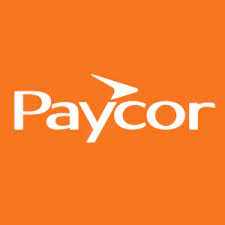
Paycor

Insperity
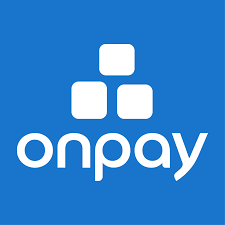
OnPay

Gusto

Paychex
How to Select a Payroll Outsourcing Service
Now that you’re familiar with the advantages and key features to look for, the next step is to select the right payroll outsourcing service. Here’s a step-by-step guide:
- Assess Your Needs: Determine what your business needs from a payroll service. How many employees do you have? Do you operate in multiple states or countries? Do you require additional HR services? Answering these questions will help you identify the type of service that suits your business.
- Budget: Define your budget. Keep in mind that while you want an affordable service, the cheapest option may not offer the quality or range of services you need.
- Research: Start by researching potential providers. Look at their services, customer reviews, and reputation. Make sure they offer all the services you need and have a good track record.
- Contact Providers: Contact your shortlisted providers. Ask about their services, pricing, and customer support. This is also a good time to assess their communication and customer service skills.
- Ask for a Demo or Trial: Some reputable providers may offer a demo or a trial of their platform. This will give you a hands-on experience with their system and help you decide if it’s user-friendly and meets your needs.
- Check References: Ask the providers for references from other businesses similar to yours. Contact these references and ask about their experience with the provider.
- Contract Review: Once you’ve chosen a provider, review the contract carefully. Make sure you understand all the terms and conditions, including what services are included, any additional costs, and the terms for termination of the contract.
Maintaining a Relationship with Your Payroll Provider
After you’ve selected a provider, it’s important to maintain a good relationship. Here are some tips:
Regular Communication
Regularly communicate with your provider. Provide them with all the necessary information on time, and don’t hesitate to ask questions or seek clarification.
Audit
Regularly audit your payroll to ensure accuracy. Even though you’ve outsourced this task, you’re still ultimately responsible for any errors or compliance issues.
Feedback
Provide feedback to your provider. Let them know if you’re unhappy with any aspect of their service. They should be willing to make improvements to meet your needs.
Choosing a payroll outsourcing service is a significant decision that can impact your business’s efficiency, compliance, and bottom line. By following the steps in this guide, you can find a provider that offers high-quality, reliable service that fits your needs and budget. Remember, the goal of outsourcing payroll is not just to save time and money, but also to enhance your business’s overall performance by allowing you to focus on strategic tasks.

Best Practices for Managing an Outsourced Payroll Provider
Once you’ve selected your payroll provider and established a working relationship, there are certain best practices you should follow to ensure the success of this partnership:
- Establish Clear Expectations: From the onset, ensure that both parties understand the expectations. This should include the scope of work, deadlines, and communication protocols.
- Stay Involved: While the idea of outsourcing payroll is to lessen the burden on your team, it’s important that you stay involved in the process. Regularly check in with your provider and be ready to offer necessary information when needed.
- Regular Reviews: Schedule regular review meetings to discuss performance, any issues or challenges, and potential improvements. This proactive approach can help prevent small issues from becoming major problems.
- Stay Informed: Keep up to date on payroll and tax regulations. While a good outsourcing provider will handle compliance, having a basic understanding will help you ensure they’re doing their job correctly.
Evaluating Your Payroll Outsourcing Service
It’s important to regularly evaluate the performance of your payroll provider. Here are some areas to consider:
- Accuracy: Are there frequent mistakes in payroll processing? Errors can indicate a lack of attention to detail or understanding of your business’s needs.
- Timeliness: Does the provider consistently meet deadlines? Late payroll can lead to unhappy employees and potential legal issues.
- Customer Service: Are they responsive and helpful when issues arise? Good customer service is a crucial aspect of a successful partnership.
- Regulatory Compliance: Has your business faced any compliance issues related to payroll since outsourcing? If so, it may indicate that the provider is not staying current with regulations.
- Value for Money: Are you getting a good return on your investment? Consider the cost of the service against the time saved, accuracy, compliance, and other benefits.
Payroll outsourcing can bring many benefits to restaurants, non-profits, and small businesses, but it requires careful selection and ongoing management to ensure success. By following the steps and best practices in this guide, you can establish a successful partnership with a payroll provider that meets your business’s unique needs and contributes to its overall success. This guide is meant to be a starting point; always consider your specific business needs and consult with a professional when necessary.
Additional Considerations for Payroll Outsourcing
As you embark on your journey with a payroll outsourcing service, there are a few more considerations to keep in mind to ensure that you make the most of this relationship:
- Employee Self-Service: A good payroll service should offer an employee self-service portal. This allows your employees to access their pay stubs, tax forms, and other personal information online, which can save time for your HR team.
- Ongoing Training: Ensure that the provider offers ongoing training or resources, especially when system updates occur or when new features are added.
- Transparency: Your chosen provider should be transparent about their pricing, operations, and methods. Any additional costs should be clearly stated upfront to avoid surprise charges.
- International Capabilities: If your business has or plans to have employees in other countries, you’ll want a payroll service that can handle international payroll and is familiar with the relevant regulations.
- Data Analytics: Some payroll providers offer data analytics, providing valuable insights into your business, such as labor costs, overtime trends, and more.
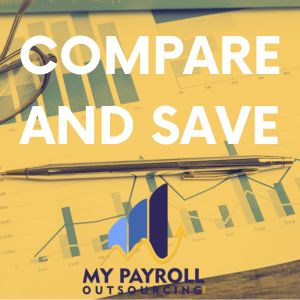
Switching Payroll Providers
If your business is not satisfied with its current payroll provider, you may consider switching. Here’s a general guide on how to do this:
- Identify the Issues: Define why your current provider is not meeting your needs. This will help you know what to look for in a new provider.
- Research and Select a New Provider: Follow the steps outlined earlier in this guide to select a new provider.
- Notify Your Current Provider: Once you’ve signed a contract with a new provider, notify your current provider. Check your contract for any notice period or termination fees.
- Data Transfer: Work with your new provider to transfer all necessary data. This will likely include employee information, previous payroll records, and tax information.
- Test: Run a test payroll with your new provider before going live to ensure everything is working correctly.
Outsourcing your payroll is a significant decision and requires ongoing management to ensure success. However, with careful selection, clear communication, and regular evaluation, it can bring many benefits to your small business. Remember, the goal is not just to make your life easier, but also to improve accuracy, compliance, and efficiency in your business. We hope this guide helps you in your payroll outsourcing journey.